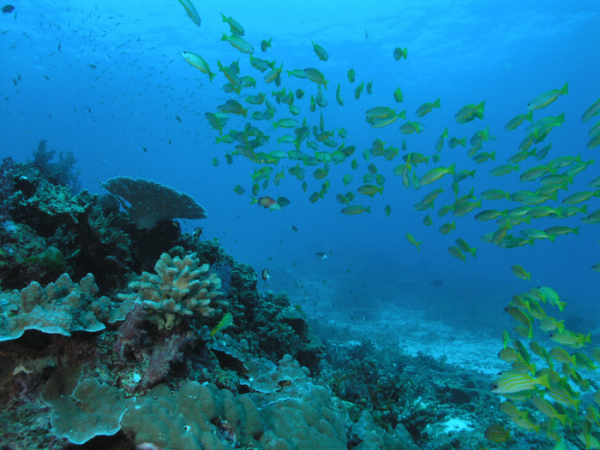Dying reefs and once-vibrant corals that have since lost all colour: climate change is having massive effects on the architects of undersea cities. As waters grow warmer, the phenomenon of “coral bleaching” continues to spread. Yet not all corals are equally susceptible. An international team led by Cesar Pacherres and Moritz Holtappels from the Alfred Wegener Institute, Helmholtz Centre for Polar and Marine Research (AWI) in Bremerhaven and Soeren Ahmerkamp from the Max Planck Institute for Marine Microbiology in Bremen may have found the explanation: using minuscule filaments (cilia), corals can influence the currents in their immediate vicinity, protecting themselves from harmful oxygen concentrations, as the experts report in the journal Current Biology.
Coral reefs are not only one of the most biodiverse ecosystems on our planet; they are also among the most economically important ones. “For example, they’re extremely important for fishing and tourism,” says Moritz Holtappels. “And as wave breakers, they provide essential services for coastal management.” Accordingly, the experts are very concerned about the current status of these valuable undersea cities, which are simultaneously facing a variety of threats: the overfertilization and acidification of the ocean, as well as overly intensive fishing. Making matters worse, climate change is increasingly leading to the dreaded “coral bleaching”.
This happens when the water gets too warm for the reef-builders. Most of the small polyps that create these impressive calcium carbonate formations live in symbiosis with algae belonging to the dinoflagellates. They offer these organisms protection, and in return receive energy-rich sugar and other products that their “flatmates” produce from carbon dioxide and water with the aid of sunlight. But this process, known as photosynthesis, can become problematic when temperatures climb too high. Instead of providing the corals with energy, the algae release harmful substances. In response, the polyps “evict” them, causing the corals to lose their colour – and in many cases, to die off completely. “But this doesn’t happen to all the corals in a reef,” Cesar Pacherres explains. “Some bleach out quickly, others, not at all.” What explains the difference in responses?
Read more at: Alfred Wegener Institute, Helmholtz Centre for Polar and Marine Research
Reef with stony coral colony (Porites lutea) in the Andaman Sea off the west coast of Thailand. (Photo Credit: Niphon Phongsuwan, Phuket Marine Biological Center)


